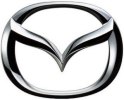
| - |
R&D center: Hiroshima
Main plants in Japan: Hiroshima and Hofu.
Main plants overseas: Salamanca, Mexico

FY2019/20: 1,419,000 units
FY2018/19: 1,561,000 units
FY2017/18: 1,631,000 units
FY2016/17: 1,559,000 units
FY2015/16: 1,534,000 units
FY2014/15: 1,397,000 units
FY2013/14: 1,331,000 units
FY2012/13: 1,235,000 units
FY2011/12: 1,247,000 units
FY2010/11: 1,273,000 units
FY2009/10: 1,193,000 units
FY2008/09: 1,261,000 units
FY2007/08: 1,363,000 units
FY2006/07: 1,302,000 units
FY2005/06: 1,276,000 units
FY2019/20 sales by model:
Mazda 2: 139,000 units
Mazda 3: 309,000 units
Mazda 6: 120,000 units
CX-3: 120,000 units
CX-30: 73,000 units
CX-4: 45,000 units
CX-5: 416,000 units
CX-8: 27,000 units
CX-9: 61,000 units
MX-5: 27,000 units
Reference:
http://www.mazda.com/en/investors/library/annual/
In terms of size, Mazda is no way to compete with Toyota, Honda and Nissan. However, it distinguishes itself from others by injecting sporty flavours to its cars, making them more attractive to keen drivers. This strategy paid off in its sales figures recorded in recent years. Its persistence in rotary engine development also adds to its uniqueness.
At that time the Japanese government wanted to consolidate the domestic motor industry, forcing small companies to merge or to be absorbed by bigger companies like Toyota and Nissan. Mazda knew in order to remain independent it must own a promising technology that was unique in Japan. It chose Wankel engine, a rotary engine invented by Dr. Felix Wankel of German car maker NSU. Mazda got license from NSU and started improving the Wankel engine for better reliability and power. In 1967, rotary engine finally made its debut in Cosmo coupe, a sophisticated-looking 2-door grand tourer bounded in Japan. Next year, a similar engine appeared in R100, the coupe version of Familia saloon.
 Cosmo (1967) - first Mazda rotary car
Cosmo (1967) - first Mazda rotary carExport to the USA market started in 1970 with RX-2, followed by RX-3 and RX-4, all were rotary-engined versions of its conventional-engined models. Wankel engines found prosperity there - by 1978, it had already produced 1 million rotary cars ! That year also saw the launch of RX-7 sports car, which became the definitive rotary model.
However, the Oil Crisis in 1973 destroyed the dream of rotary cars, as they were notorious for thirst. Sales crashed in the America and led to the demise of all rotary projects, leaving only the niche RX-7 to carry on. Gone together with rotary cars was the fortune of Mazda. In 1979, Ford acquired 25% stake in Mazda.
 RX-7 Mk2 (1985)
RX-7 Mk2 (1985)In the following years, Ford stepped up its influence on Mazda. At first it rebadged Mazda 121, 323 and 626 into Ford Festiva, Laser and Telstar respectively for sale in Australia and Asian countries. Then they built a joint-venture factory in the USA to produce Mazda 626, MX-6 and Ford Probe, the latter was derived from MX-6. Ford made good use of its Japanese subsidiary to increase sales.
In 1984, the company name Toyo Kogyo was finally renamed to Mazda. At the same time it was recovering quickly. The mainstream model 121, 323, 626 and 929 worked well in the 1980s to push its sales upward. The MX-5 roadster, a modern Lotus Elan, was a runaway success in USA and Europe, once again proving that Japanese was good at fixing the faults of Western inventions. At the end of the decade, Mazda decided to expand its models to premium car segment. Mirroring Acura, Lexus and Infiniti, it created sub-brand Xedos and Eunos and a 2-tier premium car lineup. Unfortunately, this ambitious project came at the wrong time. The burst of bubble economy caused sales slump in Japan, coupling to the global recession in the early 1990s, Mazda suffered heavy loss. It had to kill the premium car project and find external investors...
 MX-5 (1989)
MX-5 (1989)Once again, Ford emerged as its saviour. In 1997, it increased its stakes in Mazda to a controlling 34%, allowing it to appoint its men to head the Japanese company. As a result, the two companies came closer still. Mazda started sharing car platforms (e.g. Mazda 2, 3 and 6) with European and American Ford. It also offered its gasoline engines for Ford to produce in other locations. Although Ford offloaded most of its shares in 2008 due to its own financial difficulties, the strategic partnership remained.
In the early 2000s, Mazda started a campagn to promote a sporty image. This began with RX-8, which succeeded the late RX-7, and followed by the sporty-tuned Mazda 3 and 6. It changed the company image successfully and lured many keen drivers from its Japanese rivals.